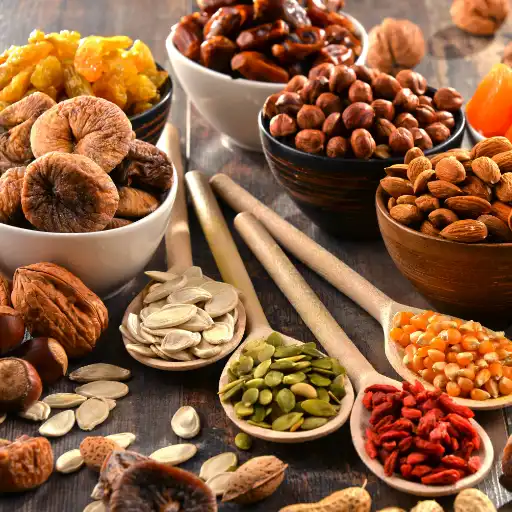Nutritional Strategies for Osteoarthritis: Foods That Help Reduce Inflammation and Pain

Osteoarthritis, a degenerative joint disease, affects millions worldwide, causing pain, stiffness, and reduced mobility. While there is no cure for osteoarthritis, managing symptoms through diet can significantly improve quality of life. This blog will explore nutritional strategies focusing on anti-inflammatory foods and antioxidants that can help reduce inflammation and pain associated with osteoarthritis.
The Power of Anti-Inflammatory Foods
Inflammation is a key contributor to osteoarthritis symptoms. By incorporating anti-inflammatory foods into your diet, you can help manage and reduce the severity of these symptoms. Here are some foods known for their anti-inflammatory properties:
1. Fatty Fish
Fatty fish like salmon, mackerel, sardines, and trout are rich in omega-3 fatty acids, which have powerful anti-inflammatory effects. Omega-3s help reduce the production of inflammatory molecules and cytokines, which can alleviate joint pain and stiffness. Aim to include fatty fish in your diet at least twice a week.


2. Nuts and Seeds
Nuts and seeds are excellent sources of healthy fats, fiber, and protein. Walnuts, flaxseeds, chia seeds, and almonds are particularly beneficial due to their high omega-3 and antioxidant content. These nutrients help reduce inflammation and provide essential building blocks for joint health. Add a handful of nuts or a tablespoon of seeds to your meals or snacks for an anti-inflammatory boost.
3. Leafy Greens
Leafy greens such as spinach, kale, and Swiss chard are packed with vitamins, minerals, and antioxidants. They contain high levels of vitamin C, vitamin E, and beta-carotene, which are known to reduce inflammation and protect cells from damage. Incorporate a variety of leafy greens into your diet by adding them to salads, smoothies, or sautéed dishes.

Antioxidants: Protecting Your Joints from Oxidative Stress
Oxidative stress occurs when there is an imbalance between free radicals and antioxidants in the body, leading to cell damage and inflammation. Antioxidants neutralize free radicals and protect your cells, playing a crucial role in managing osteoarthritis symptoms. Here are some antioxidant-rich foods to include in your diet:
1. Berries
Berries such as blueberries, strawberries, raspberries, and blackberries are rich in antioxidants, particularly anthocyanins, which have anti-inflammatory properties. These fruits help reduce oxidative stress and inflammation, providing relief from osteoarthritis symptoms. Enjoy berries as a snack, in smoothies, or as a topping for yogurt and cereals.


2. Turmeric
Turmeric contains curcumin, a powerful antioxidant and anti-inflammatory compound. Studies have shown that curcumin can help reduce pain and improve joint function in osteoarthritis patients. Add turmeric to your dishes, teas, or take a curcumin supplement to benefit from its therapeutic properties.
3. Green Tea
Green tea is packed with polyphenols, which are antioxidants with strong anti-inflammatory effects. Regular consumption of green tea can help reduce inflammation and slow cartilage destruction. Aim for two to three cups of green tea daily to harness its benefits.


4. Citrus Fruits
Citrus fruits like oranges, lemons, and grapefruits are high in vitamin C, an antioxidant that plays a key role in collagen formation and joint health. Vitamin C helps reduce inflammation and protect cartilage. Include citrus fruits in your diet by drinking fresh juices or adding slices to salads and dishes.
Practical Tips for an Anti-Inflammatory Diet
- Variety is Key: Incorporate a wide range of anti-inflammatory and antioxidant-rich foods to ensure you get all necessary nutrients.
- Stay Hydrated: Drink plenty of water throughout the day to support joint lubrication and overall health.
- Limit Processed Foods: Reduce your intake of processed foods, sugary drinks, and red meat, as they can increase inflammation.
- Healthy Cooking Methods: Opt for steaming, baking, or grilling instead of frying to preserve the nutritional value of your food.
- Balanced Meals: Ensure your meals are balanced with lean protein, healthy fats, and plenty of fruits and vegetables.
